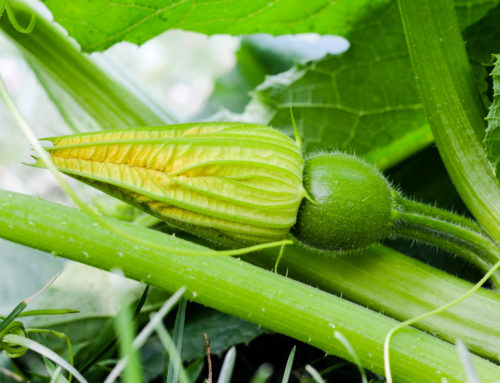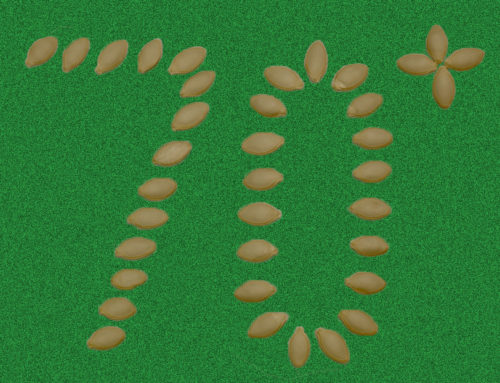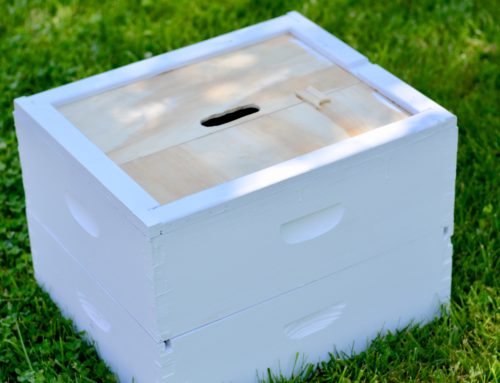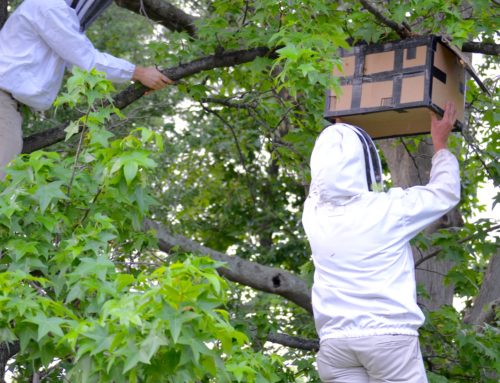Over the weekend, I found a whole bulb of garlic in the cabinet on top of my fridge. We don’t regularly keep anything in there, so why I had the urge to open it up, I don’t know. To my delight, I uncovered an entire garlic bulb! I’d set it aside from last year’s harvest, intending to plant it in the fall but had completely forgotten about it. This missing bulb explains why I felt so short on garlic last year when it came time to plant. Since we still have some fresh garlic in the pantry, I decided to dehydrate the bulb I uncovered to make garlic powder.
Growing garlic is easy. Turning garlic into garlic powder is easy. And, let’s face it, enjoying garlic powder is also easy! My favorite way to enjoy garlic powder is sprinkled on warm pizza! It’s hard to beat a slice of homemade pizza topped with garden veggies and home grown spices, including roasted cayenne pepper and garlic powder. Garlic powder can also be a quick and easy way to add garlic to any recipe. We use garlic powder on a regular basis, so I knew exactly what to do with the forgotten bulb as soon as I uncovered it. Are you ready to enjoy some fresh garlic powder too?
Step 1: Attain Garlic. Garlic can be purchased from the store or grown in your garden, the process is the same either way. In my experience 1 bulb of garlic yields 1-2 tablespoons of garlic power, depending on the size of the bulb.
Step 2: Peel The Garlic. Although a garlic press will work for this I recently learned a new trick to speed up the process of removing the garlic peel by hand. Cut off the top and bottom end of each clove, then use the flat side of your chef’s knife to slightly mash the garlic clove. After the clove is smashed, the remainder of the peel should come off easily. I find this method to produce more useable garlic than by using a press. Give it a try, you’ll be surprised.

Garlic ready for dehydration
Step 3: Chop The Garlic. After the garlic is peeled, you need to either slice the garlic into thin slices or use a food processor to roughly mince the garlic into smaller pieces. This is to speed up the dehydration process. The smaller the pieces, the shorter the dehydration time. The first time I made garlic powder, I sliced the garlic as thin as I could with my chef’s knife, and it took 3 days or so to dry completely in my food dehydrator. Since that first experience, I’ve significantly reduced the dehydration time by chopping the peeled garlic in a food processor instead of slicing, bringing the dehydration time down from several days to only several hours. Pulse an electric food processor or use a hand chopper like I do. You don’t want to liquefy your garlic!

Dehydrated Garlic Ready To Be Ground Into Garlic Powder
Step 4: Dehydrate The Garlic. Place the garlic into a dehydrator until all of the pieces are brittle and crumbly. This could take anywhere from a few hours to a few days depending on how finely you chopped the garlic prior to dehydration. The key to long shelf life is to make sure the garlic is completely dehydrated. The garlic has to be completely brittle prior to grinding and storage. If the pieces are leathery or bendable, then they are not ready yet. Continue to dehydrate the cloves until they are very dry. You should be able to break the slices in half. Alternatively, if you do not own a dehydrator, you can place the minced garlic in the oven at 115° F until the garlic has become dry and brittle. Note that if the garlic has not been dehydrated long enough it can cake together and mold.
Step 5: Grind The Garlic. Grind the dried garlic into a powder using a food processor or coffee grinder. I’m sure a coffee grinder works better, but I don’t have one of those, so I just use a Ninja food processor. Anything will do.
Step 6: Store The Garlic. Place your fresh garlic powder into a spice container. I save used glass spice jars for this express purpose.
Step 7: Enjoy! Sprinkle on pizza, use for making garlic bread or add to any recipe!
The process is very simple and not overly scientific or exact, so I encourage you to try it! I’m sure you will have success!
2018 Update: This year I made significantly more garlic powder than last year. I processed nearly 100 bulbs of garlic and dehydrated them into powder. My yield was 8 three ounce spice jars. I came away with several lessons learned.
- If growing garlic for powder, grow bulbs with a few large cloves.
- Dehydration temperature should be around 115° F. Cooking at higher temperatures, even as low as 150° F actually cooks the garlic as it is drying.
- While making garlic powder is easy, it is also time consuming, and if you plan to do it on a large scale (anything more than a handful of bulbs) having some specialized equipment is a must.
- I could not charge enough for garlic powder at a Farmer’s Market to make it worth my time to produce by hand.
- I really like my new Gourmia Dehydrator! It has temperature control as well as a timer.

2018 Garlic Powder Operation
This post may contain affiliate links, which means that at no additional cost to you we may make a small commission if you click on the link & make a purchase. Thank you for your support!





I’m wondering how the nutritional value is changed
during the drying process. Any thoughts?
Julie,
Thank you for your comment! Dehydrating is actually one of the more nutritional ways to store vegetables. Although eating fresh garlic is always prefered consuming garlic powder has many of the same nutritional benefits. I found a good article on the subject here https://www.dovemed.com/healthy-living/wellness-center/what-are-differences-between-using-fresh-versus-garlic-powder/
Paul